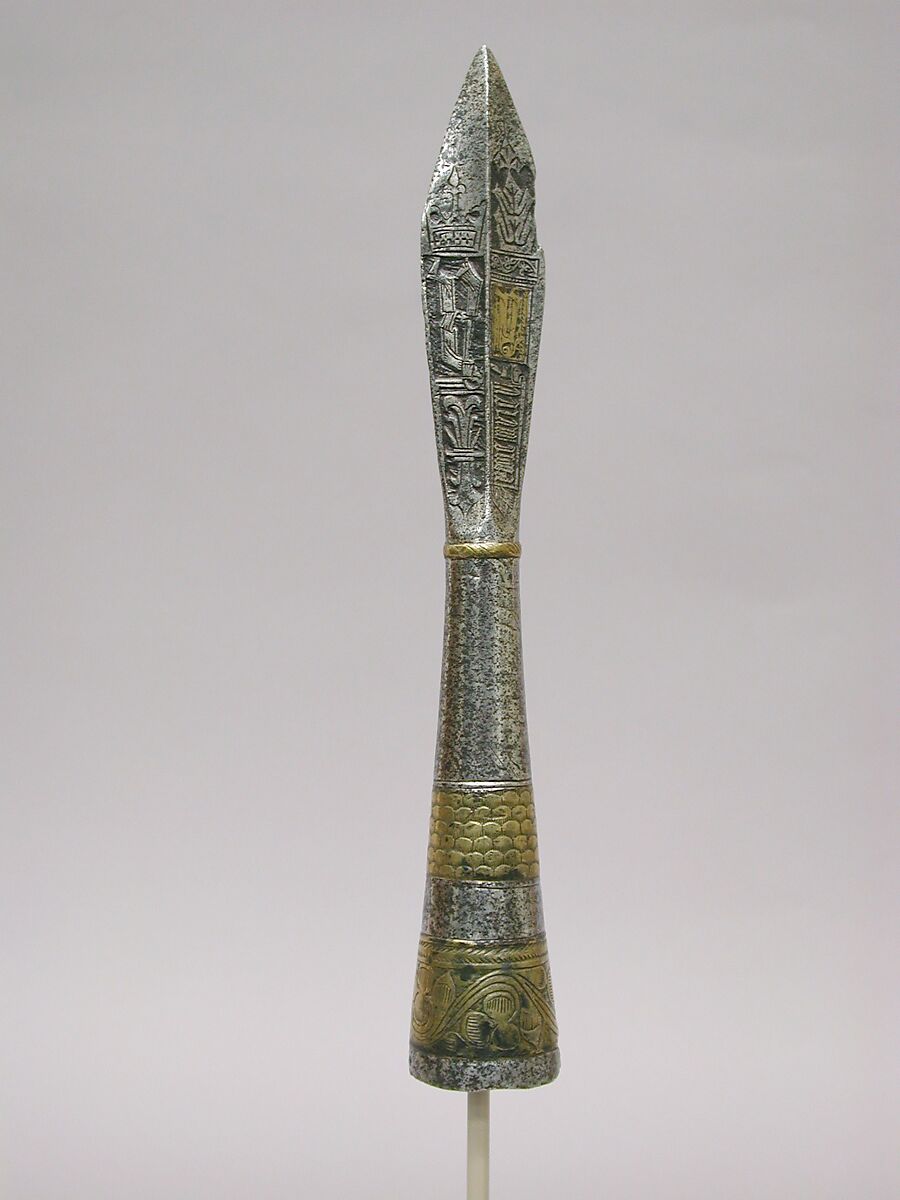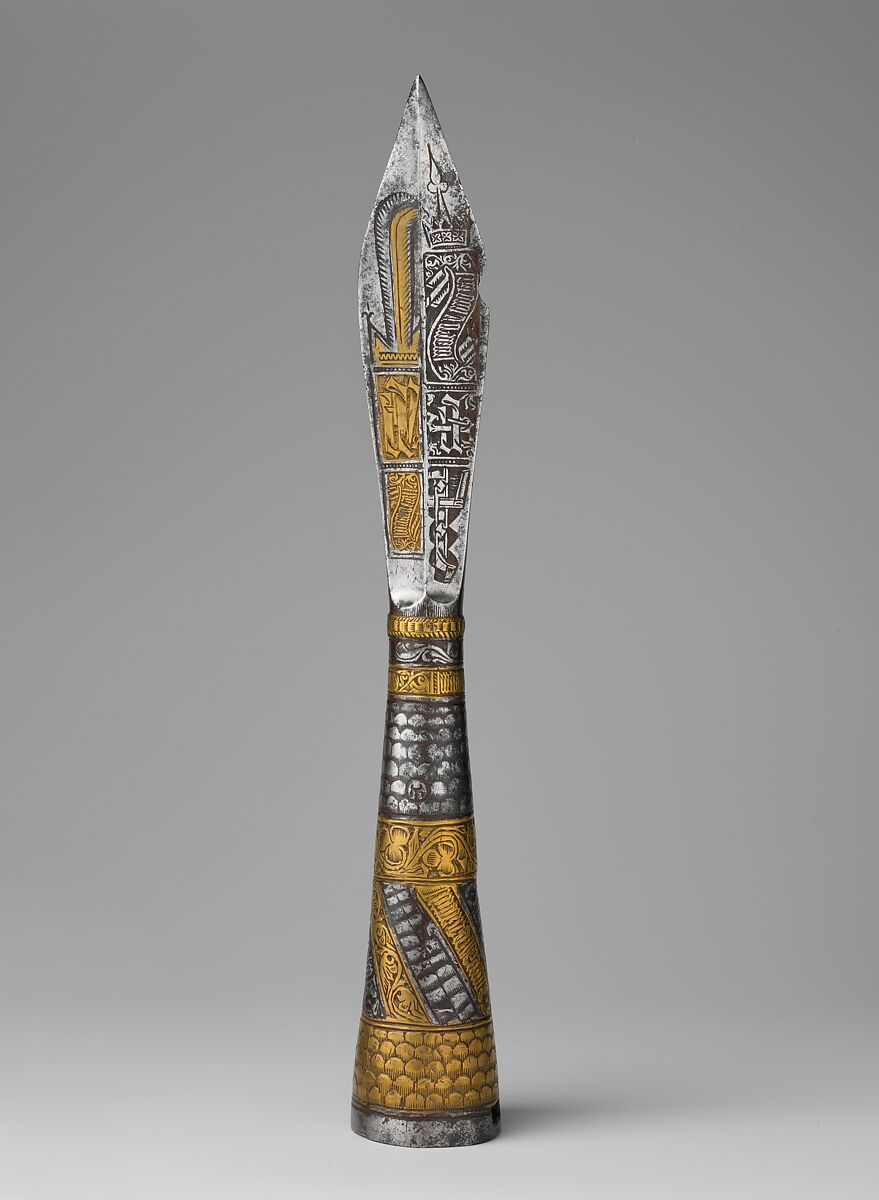The Metropolitan Museum of Art in New York is home to countless artifacts that offer glimpses into the rich tapestry of human history. Among these treasures are three ceremonial arrowheads dating back to 1437-39, originating from Bohemia, likely Prague. These arrowheads, though initially mounted on wooden shafts, have transcended their functional purpose to become symbols of royal rank and historical significance. In this article, we will delve into the intricate details and historical context of these remarkable artifacts.
The Significance of the Ceremonial Arrowheads

Symbols of Rank and Power
These three arrowheads, notable for their size and craftsmanship, were more than just tools of war. Their extraordinary dimensions and elaborate decorations suggest that they were intended as symbols of rank, likely used in ceremonial contexts rather than in battle. The presence of royal monograms and badges indicates their association with the highest echelons of Bohemian royalty.
Royal Monograms and Religious Invocations
Each arrowhead is adorned with the monogram AR, representing Albert, the King of Bohemia and Hungary, who reigned from 1437 to 1439. This monogram signifies the royal ownership and the esteemed status of these objects. Additionally, one of the arrowheads bears the monogram AE, which likely stands for Albert and Elizabeth, his queen. These markings not only denote the royal connection but also reflect the personal and political alliances of the time.
Historical Context: The Reign of King Albert

Albert of Bohemia and Hungary
Albert’s short reign as King of Bohemia and Hungary was marked by significant events and conflicts. Ascending to the throne in 1437, Albert’s rule was abruptly ended by his death in 1439. Despite the brevity of his kingship, the artifacts from his era, such as these arrowheads, provide valuable insights into the period’s political and cultural landscape.
The Ottoman Connection
Intriguingly, the right and left arrowheads bear the so-called Turkish arsenal mark. This mark indicates that these arrowheads were captured by Ottoman forces, possibly during the campaign of 1439 in which King Albert met his demise. After their capture, the arrowheads were stored in the Turkish arsenal in Constantinople (modern-day Istanbul). This connection to the Ottoman Empire adds a layer of complexity to the history of these artifacts, intertwining the fates of European and Ottoman powers.
The Aesthetic and Symbolic Elements

Decorative Details
The arrowheads are not only significant for their historical context but also for their intricate decorative elements. The royal monograms and badges, along with religious invocations, are meticulously crafted, showcasing the high level of artistry and symbolism that characterized Bohemian royal artifacts. These decorations served to reinforce the arrowheads’ status as symbols of power and divine protection.
Craftsmanship and Materials
Originally mounted on wooden shafts, the arrowheads’ craftsmanship is a testament to the skill of Bohemian artisans. The use of metal, combined with the detailed engravings, reflects the technological and artistic advancements of the period. The preservation of these arrowheads allows us to appreciate the meticulous work that went into creating objects of both practical and ceremonial importance.
The Journey to The Metropolitan Museum of Art

Acquisition and Display
The journey of these arrowheads from the battlefields of 15th-century Europe to the halls of The Metropolitan Museum of Art is a story of preservation and appreciation. Acquired by the museum, these artifacts are now on display, offering visitors a tangible connection to a pivotal era in European history. Their presence in a modern museum context underscores the enduring significance of historical artifacts in understanding our shared past.
Educational Value
By exhibiting these arrowheads, The Metropolitan Museum of Art provides an invaluable educational resource. Visitors can learn about the historical events surrounding King Albert’s reign, the cultural significance of ceremonial objects, and the interactions between European and Ottoman forces. These artifacts serve as a bridge between the past and the present, allowing contemporary audiences to engage with history in a meaningful way.
Conclusion
The ceremonial arrowheads from Bohemia, now housed at The Metropolitan Museum of Art, are more than just relics of a bygone era. They are symbols of royal power, artistic achievement, and historical narrative. Decorated with royal monograms and badges, these arrowheads tell the story of King Albert’s short but impactful reign and his tragic fate at the hands of Ottoman forces. As we admire these artifacts, we are reminded of the intricate web of history and the importance of preserving such treasures for future generations. Through these arrowheads, the legacy of Bohemian royalty and their interactions with the wider world continue to resonate, offering a window into the past.
